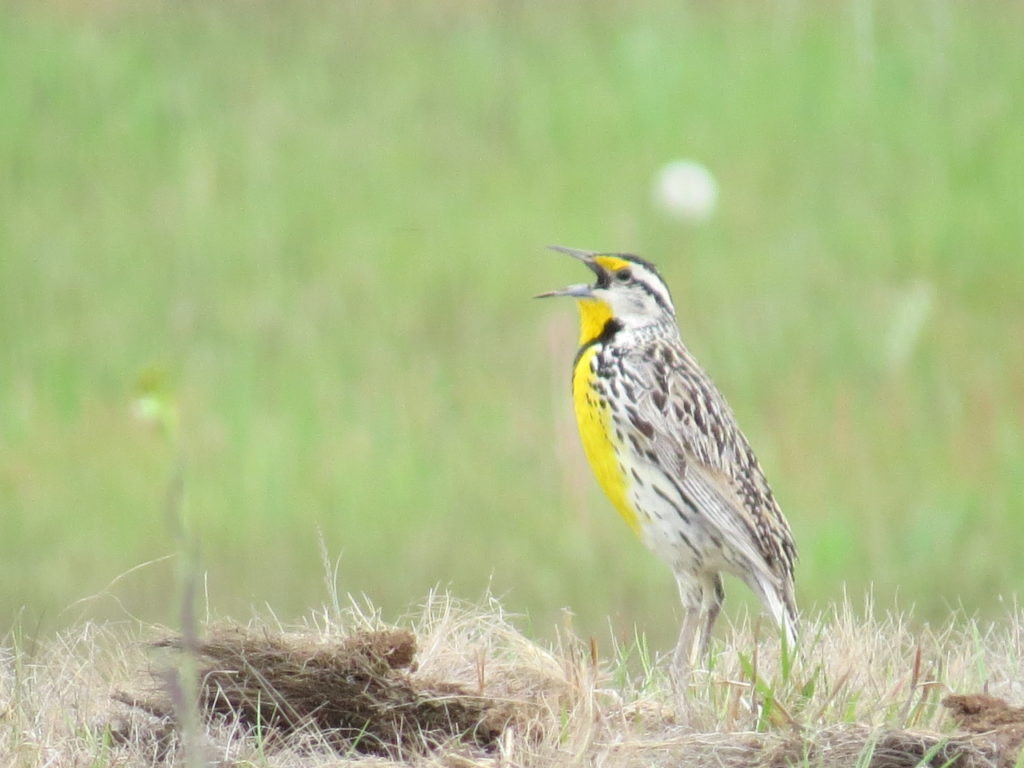(photo and story by Pam Hunt)
Like most grassland birds in the Northeast, Eastern Meadowlarks are in decline, and because of this were listed as Threatened in New Hampshire in 2017. At the time, they were largely restricted to three areas of the state: the Connecticut and Merrimack River valleys and southeastern NH in Rockingham and Strafford Counties. Many records in recent years have involved birds in May, and although these are certainly within the species’ breeding season, the lack of additional sightings in June or July makes it unclear if meadowlarks at these sites attempted to stay and breed.

It’s likely that a few more meadowlarks will be detected by the time the blitz ends in mid-July, and all the data collected will prove invaluable in updating the status of the species in the state. With these data in hand, the next step is a little more challenging: how do we protect meadowlarks at the sites where they occur? The greatest threat to grassland birds in New Hampshire is mowing, which destroys nests or makes them more vulnerable to predators. To ensure successful reproduction, the best option is to reduce or eliminate mowing during the breeding season, but this is not always compatible with management needs at the airports or farmland where most meadowlarks occur. It’s certainly possible to come up with agreements with landowners, but this is by necessity a slow and individualized process. Hopefully the new data collected in 2021 will allow NH Audubon and our partners to begin this process prior to the 2022 breeding season, and perhaps start making some of our state’s grasslands a little safer for this declining species.
